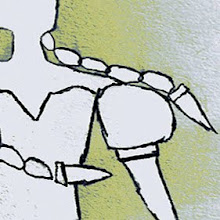Miniaturist painter Carl Gustav Klingstedt (1657-1734), Leda and the Swan, after Michelangelo
In his quest to acquire all things Italian, François I (1494-1547) always sought to attract the greatest lights of Italian painting—including Leonardo da Vinci, Andrea del Sarto, Michelangelo—to his court.
While he succeeded in convincing the aged Leonardo to enter his service in 1516 and, in so doing, obtained the Mona Lisa for France, the transalpine journey was a difficult and a dangerous one, and neither Andrea del Sarto nor Michelangelo could accept François’ invitation.
However a rare panel painting of Leda and the Swan created in 1530 by Michelangelo did make its way to France in the possession of Michelangelo’s pupil, Antonio Mini, who seems to have sold it to François I.
It entered the royal collection at Fontainebleau in the early 1530s. The painting Leda and the Swan by Michelangelo has since been lost...
The Flemish artist Cornelis Bos must have seen the work. This print, engraved and published by him, is the only record of Michelangelo’s completed painting.
In the second painting, the brushstrokes are more precise, there is more detail, there is a clearer landscape in the background, an elaborate headpiece, more vibrant colors and the drapery is white and red.
In his quest to acquire all things Italian, François I (1494-1547) always sought to attract the greatest lights of Italian painting—including Leonardo da Vinci, Andrea del Sarto, Michelangelo—to his court.
While he succeeded in convincing the aged Leonardo to enter his service in 1516 and, in so doing, obtained the Mona Lisa for France, the transalpine journey was a difficult and a dangerous one, and neither Andrea del Sarto nor Michelangelo could accept François’ invitation.
However a rare panel painting of Leda and the Swan created in 1530 by Michelangelo did make its way to France in the possession of Michelangelo’s pupil, Antonio Mini, who seems to have sold it to François I.
It entered the royal collection at Fontainebleau in the early 1530s. The painting Leda and the Swan by Michelangelo has since been lost...
The Flemish artist Cornelis Bos must have seen the work. This print, engraved and published by him, is the only record of Michelangelo’s completed painting.
Cornelis Bos, Leda and the Swan (1540s) after Michelangelo
Peter Paul Rubens would also have been familiar with Michelangelo’s Leda and he painted two versions of the subject.
You might notice that the twisting posture of Leda's body is very similar. Even the positioning of the fingers is mirrored. The swan is caressing the female in exactly the same way.
However the actual figure of the female varies drastically between Rubens’ style and Michelangelo’s style.
Michelangelo typically depicted women in a masculine way. Muscles are more clearly defined and the bodies look hard. The body is thinner. The hair is neatly styled. Michelangelo’s body proportions are a little skewed.
Rubens’ Leda's figure, on the other hand, is extremely curvaceous. The hair is somewhat loose and not as styled. The body proportions seem more realistic.
While Rubens’ two works are very similar, they do differ.
You might notice that the twisting posture of Leda's body is very similar. Even the positioning of the fingers is mirrored. The swan is caressing the female in exactly the same way.
However the actual figure of the female varies drastically between Rubens’ style and Michelangelo’s style.
Michelangelo typically depicted women in a masculine way. Muscles are more clearly defined and the bodies look hard. The body is thinner. The hair is neatly styled. Michelangelo’s body proportions are a little skewed.
Rubens’ Leda's figure, on the other hand, is extremely curvaceous. The hair is somewhat loose and not as styled. The body proportions seem more realistic.
While Rubens’ two works are very similar, they do differ.
Rubens' 1st Leda and the Swan (1601)
In the first depiction, the brushstrokes are looser, it is not as detailed, there is less landscape, no elaborate headpiece, the colors are muted and the drapes are green.
Rubens' 2nd Leda and the Swan (1602)
In the second painting, the brushstrokes are more precise, there is more detail, there is a clearer landscape in the background, an elaborate headpiece, more vibrant colors and the drapery is white and red.
%2BLeda%2Band%2Bthe%2BSwan%2B(inspired%2Bby%2BMichelangelo%2Bdeja%2Bsur%2BTmbl%2Bbeau%2Brond%2Bgra%2Bjew%2Bmagni.jpg)
%2B1536-1540.jpg)


